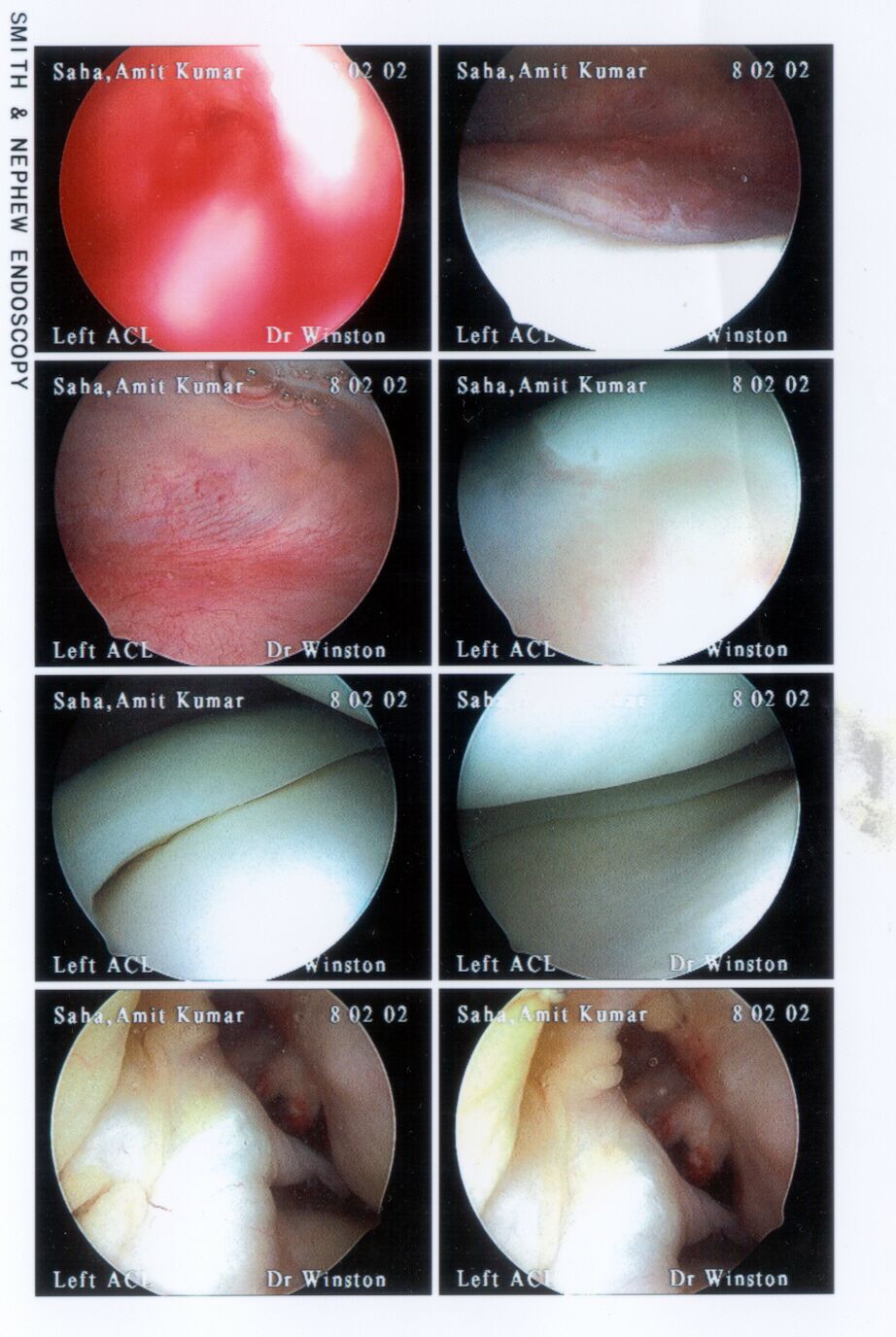Over the summer I was unfortunate enough to require a reconstruction of my Anterior Cruciate Ligament (ACL). As I was wheeled out of the clinic in an anaesthetic haze, my doctor handed me a series of photos not unlike the ones below.

After this, my second time having an ACL reconstructed, I began to wonder about why doctors would give departing patients "before and after" pictures of the insides of their knee. Without an explanation from a trained professional these pictures are practically meaningless. Is it to prove they actually did their job, that they actually replaced something in the knee? Is it to provide a little something for the scrapbook, so I can fondly remember my summer morning in the outpatient surgery center? At any rate, I think there must be some rhetorical motive for giving patients these types of pictures. And I should point out that this seems to be a convention in orthopaedic surgery. Some doctors even give their patients videos of the surgery shot through fiber optic endoscopes. I'm not sure what all this means. But when my doctor checks his handiwork later today, I'm going to ask. I'll post his answer in the comments section.
Comments
Doctor's Answer
Well, the doc's explanation of why they hand out this images was even more underwhelming than I would have imagined. He claims it's just so that patients have a record of the procedure. But this seems bogus because: 1) the photos hardly serve as a complete or reliable record; and, 2) only orthopaedic surgeons seem to do this regularly. After the dozens of x-rays, CT scans, MRIs, endoscopes and other medical imaging procedures I have undergone, only the orthopaedic surgeons have sent me home with my own copy of the pictures, which still leaves me thinking that there's more to this.
I personally don't see this as the positivism of science perpetuating science-is-all sorts of myths much as I see it as perhaps smart marketing on the part of surgeons. There's a tactile-ness to a photo that I think people crave, even, or especially, in cases like these, where most patients really don't know what's going on and are already at the mercy of their physician's knowledge (which becomes tantamount to authority).
testify!
So is this the physical return on your investment? Is the photo what you're paying for? Or is the photo a sort assurance that (because you cannot see inside your knee, and because you were unconscious during the procedure) that you are indeed getting what you paid for?
Ultrasound
Interesting point. It made me think of ultrasound photos. These photos are the tangible result of that procedure for expecting parents, who can then show them off to friends and family (and everyone else in the world) to prove that they are in fact pregnant.
Proof of seeing Disneyland AND knee surgery
Since, again as Sontag says, the reason why photograph are taken so obsessively by travelers is because they want a record that the objective sight was seen and that fun was had, and apparently Nate's surgery photos are evidence that the doctor did his job, is most photography, in a sense, just evidence? Or evidence that you got what you paid for?
oooh! Surgery as medical
oooh! Surgery as medical tourism!!
Hooray for Science Week at Viz.!
Nate, I think the idea of "practically meaningless" photos is the place to begin with these images. These images, which as you note need a trained professional for interpretation, unravel Sontag's assertion that we need to know what a picture is of before we can evaluate it. Scientific images, which are finding their way into numerous channels of public circulation (see particularly procedural crime dramas), have a particular kind of authorization in their very display. Whether or not you can tell what is different about your knee isn't really what the images are meant to accomplish. In their very reception, they me be the confirmation of scientific authority over the body. Even if we can't tell what is different or what is being shown, we can see it is science, and that we are, as viewers, encouraged to particpate in the positivist discovery of science.
subject of/subject to science
I don't know if I would agree that the distribution of such images encourage participation so much as perpetuate what you assert as "scientific authority" over the body. These images rely on knowledge and authority and the distribution of such images to the public encourages one to acknowledge (as Nate does) the "lay" position of being without this privileged knowledge. In this way I think it is an interesting estrangement of subject from his or her own body. You seem to be placed in the position of the voyeur here - you see inside, but from a passive, uninformed position. If this is a "while you were out" memento, it also reminds us that for most of us, we are always in the dark when it comes to our own bodies.